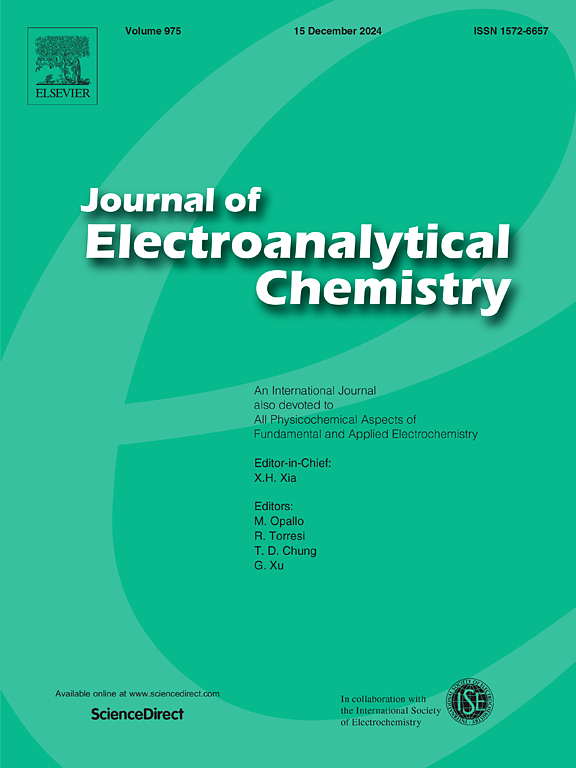Photoelectrocatalytic highly selective oxidation of glycerol to C3 products on Mo:BiVO4/NiOOH photoanodes
IF 4.1
3区 化学
Q1 CHEMISTRY, ANALYTICAL
引用次数: 0
Abstract
The extensive adoption of biomass diesel has resulted in a notable increase in glycerol production as a by-product, thereby underscoring the significance of glycerol oxidation into high-value derivatives. This research focuses on the development of NiOOH-modified Molybdenum-doped Bismuth vanadate (Mo:BiVO4/NiOOH) photoanodes for the purpose of glycerol oxidation. The results indicate that the Mo:BiVO4/NiOOH configuration markedly improves the efficiency of electron-hole separation. Through adsorption and desorption experiments, it was observed that the Mo:BiVO4/NiOOH photoanode demonstrates a low affinity for glyceraldehyde (GLAD) and 1,3-dihydroxyacetone (DHA), thereby facilitating their desorption from the surface. Mechanistic studies revealed that the surface of the Mo:BiVO4/NiOOH photoanode generates carbon and hydroxyl radicals via holes. The hydroxyl group subsequently oxidizes the carbon radical, leading to the formation of GLAD and DHA. In this study, the synergistic effect of NiOOH loading and Mo doping on BiVO4 was analyzed, and a photoanode with high selectivity in the glycerol conversion process was prepared, which provided important support for the progress of photoelectrocatalytic glycerol conversion.
求助全文
约1分钟内获得全文
求助全文
来源期刊
CiteScore
7.80
自引率
6.70%
发文量
912
审稿时长
2.4 months
期刊介绍:
The Journal of Electroanalytical Chemistry is the foremost international journal devoted to the interdisciplinary subject of electrochemistry in all its aspects, theoretical as well as applied.
Electrochemistry is a wide ranging area that is in a state of continuous evolution. Rather than compiling a long list of topics covered by the Journal, the editors would like to draw particular attention to the key issues of novelty, topicality and quality. Papers should present new and interesting electrochemical science in a way that is accessible to the reader. The presentation and discussion should be at a level that is consistent with the international status of the Journal. Reports describing the application of well-established techniques to problems that are essentially technical will not be accepted. Similarly, papers that report observations but fail to provide adequate interpretation will be rejected by the Editors. Papers dealing with technical electrochemistry should be submitted to other specialist journals unless the authors can show that their work provides substantially new insights into electrochemical processes.

 求助内容:
求助内容: 应助结果提醒方式:
应助结果提醒方式:


